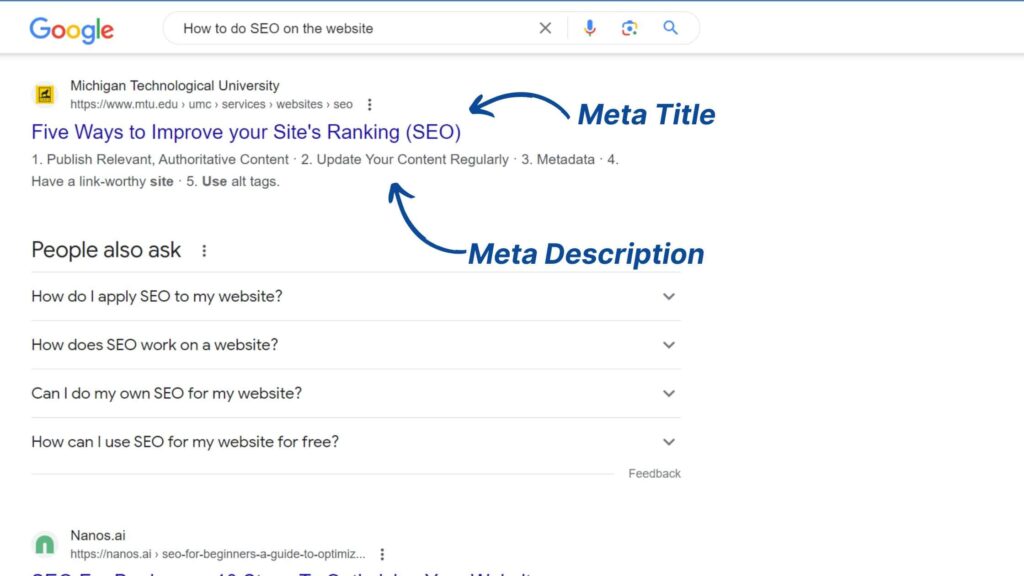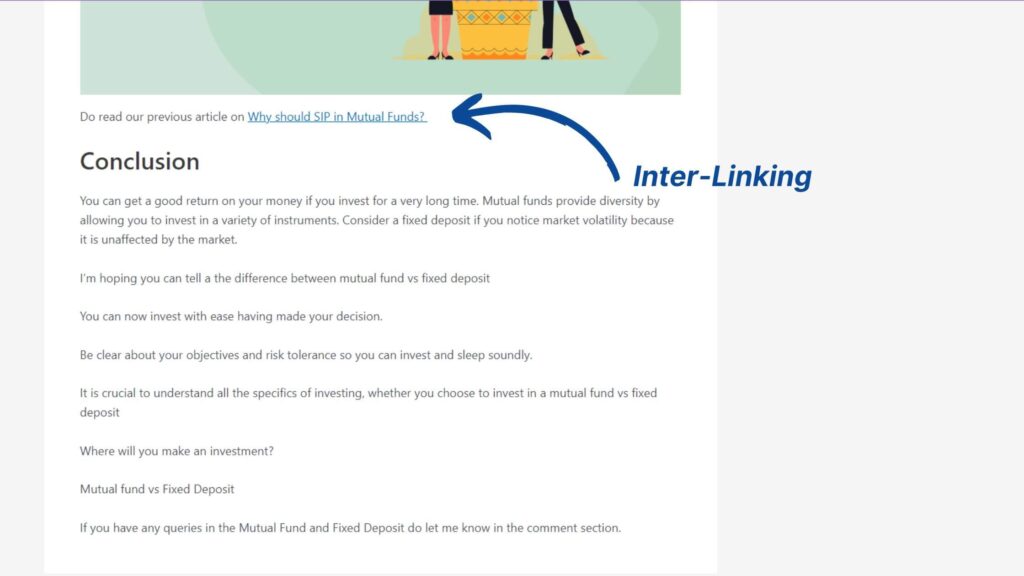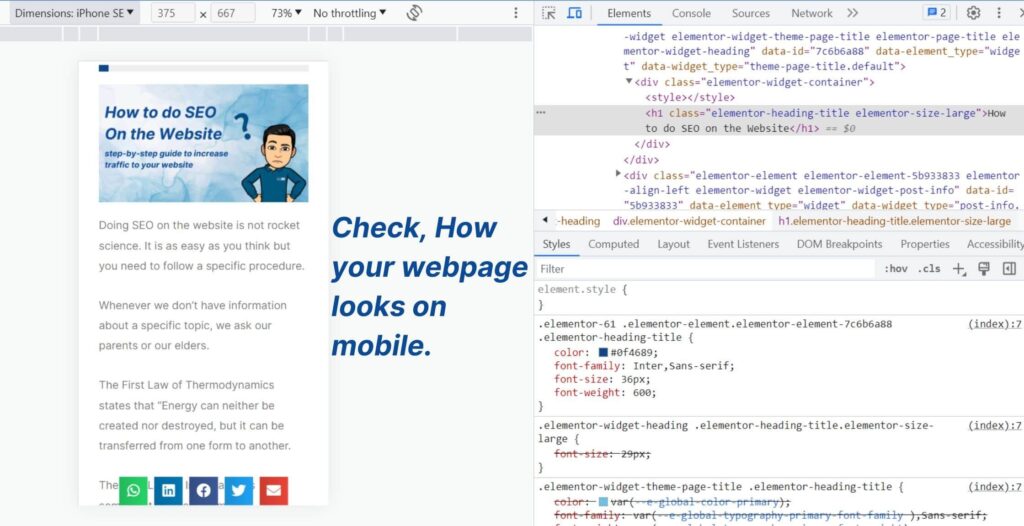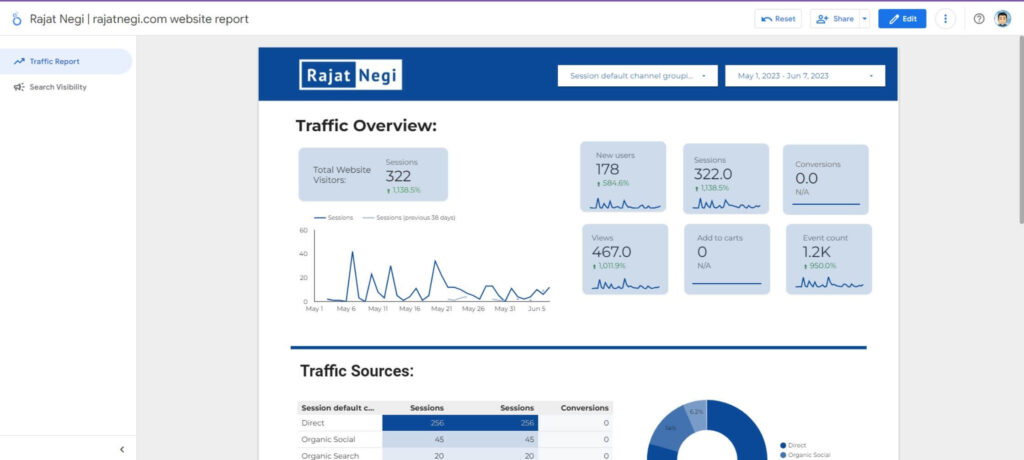

Thank you for taking the time to check out my post, it means a lot to me. If you want me to do SEO for your website. Schedule a FREE consultation with me, and I will plan and strategize for your website.

Thank you for taking the time to check out my post, it means a lot to me. If you want me to do SEO for your website. Schedule a FREE consultation with me, and I will plan and strategize for your website.

A higher Google ranking is what every business or website needs in today’s era of Internet marketing.
As most of us are moving towards digital space, therefore it is important for a business to be present in that place where their potential customer hangs out.
Achieving a higher Google ranking is crucial for online success. As businesses and websites compete for the top spots in search engine results, it’s essential to know some of the secrets that can give you a competitive edge over your organic competitors.
In this blog, we will discuss 10 SEO secrets for higher Google ranking and also going to increase the visibility of your website over the search engine rankings.
After this blog, you will be able to understand How to get higher Google ranking?
Achieving a higher Google ranking starts with comprehensive keyword research. By conducting thorough keyword analysis, you can identify the right terms and phrases that will boat your website’s visibility and attract targeted organic traffic.
Every business or website has a specific set of customers, which you need to find.
For e.g., if you are an ed-tech startup and you sell courses that help people to get placed into MAANG companies, then your audience will be from a Btech background. Also, there are more qualities that you need to figure out, like what problem they are facing, how much they want to earn. In what topic do they find the most difficulty etc?
You need to research their demographics, preferences, and pain points so that it would be easy for you to discover the keyword which they are going to use when searching for relevant content.
You need to make a list of keywords that you are going to target based on your niche, product, service, and customer avatar. The best way to do it is to create a new Excel sheet and filter out the relvant keywords. You need to think about what your potential customers might type into search engines to find businesses like yours. Informational keywords are going to work for you if you are just starting out your SEO journey.
In the digital space, to help you with higher Google ranking SEO tools are there which you can use for your keyword research, These tools are SEMrush, Ahrefs, Ubersuggest and many more. These tools will help you to do keyword research in the most easiest way. You can also compare search volume, competition, and related keywords, which will help you to consider or neglect the set of keywords.
Since you have figured out your keyword then you need to check what websites are already ranking on those sets of keywords. It means you need to analyze your organic competitor and look for the gaps which they have not filled in their content.
Generally, Long-Tail keywords are long and you need to consider them if you are just starting out your SEO journey. This way you will be targeting specific user intent and capture highly interested visitors.
Consider the search volume and competition for each keyword. Ideally, you need to select keywords with a decent search volume and manageable competition. Now you need to make a balance in between these keywords and competition to make chance for higher Google Ranking.
Doing keyword research is a never ending process, you need to monitor your keyword performance and alter as per trends. Google Search Console also helps in that. It shows a specific list of those keywords for which your website came up when a user searched for the same keyword which you have included in your content.
In order to write high-quality, SEO-optimised content that reveals the secret to achieving higher Google rankings, it is crucial to maintain an active voice throughout the writing process. Let’s see how to structure the content with the help of the introduction, body, and conclusion.
While writing an introduction, you need to get your website to have a good retention rate. You can start with mind-blowing stats, a provocative question, or a slogan.
Moving on to the body of the content, break down your content into several sub-points to provide a comprehensive guide. For this, you can check what your organic competitors are writing and how they have created their sub-points. Supporting your content with evidence and examples is a great way to show your expertise in a specific niche.
Furthermore, adding images, infographics, or videos can enhance the quality of your content and make it more appealing and engaging.
Moving towards conclusion, summarise the main points that you have discussed in the body. Emphasise that applying your strategies that you have written in the body will help the reader get the desired result.
I hope now you can easily make high-quality content, which will help your website get a higher Google ranking.

In order to achieve a higher Google ranking, it’s essential to optimise the on-page elements of the website. When you do on-page SEO, it means you are optimising those elements that are present on the page. This will help you increase your visibility and relevance in search engine results. By implementing on-page SEO techniques on your website, the probability of your website securing a higher Google ranking will go up. Let’s discuss all the important elements of on-page SEO.
The title tag is the most crucial element of on-page optimization. It is important because these titles will help you get clicks from SERPs. Create compelling and keyword-rich meta titles that accurately describe the content of your page. Keep your title within 60 characters to ensure that it fully appears in SERPs. Include relevant keywords naturally and make the title enticing to visitors. The title will decide whether you get clicked or not.
The meta description provides a brief summary of your page in the SERPs. By writing an informative and enticing meta description within 160 characters. If you want a higher Google ranking, then you also need to get clicks out of it. Relevant keywords in the meta description show the search engine that you are writing for a specific set of keywords. I want you to craft a compelling meta description that encourages users to click through and explore the content.
Optimising image alt text is essential for on-page SEO. Provide descriptive alt text for each image on your web page to describe what the image is all about. You can also consider relevant keywords where appropriate, but make sure that the alt text remains concise and informative. Alt text not only helps search engines understand the images but also improves accessibility for visually impaired users.
Optimise your URLs to enhance on-page SEO. The trick is to optimise your website for a higher Google ranking. You just need to include the focused keyword in your URL. One more important thing that I want you to know is that you shouldn’t use underscores for separating words; instead, use hyphens to separate the words.
Headings tags are nothing but the subpoints which summarise your whole content, Heading tags (H1, H2, H3, etc.) provide structure to your content and help search engines understand the levels of hierarchy. Use the H1 tag for the main heading of your page, and remember that there can be only one heading that has an H1 tag. When you go down with the post, you need to optimise (H2, H3, etc.). This way, you will have sections and highlight keywords for the post.

Inter-linking plays a crucial role in enhancing website visibility and driving organic traffic. When done correctly, it can significantly impact your website’s search engine optimization efforts and help you get higher Google rankings.
Inter-linking refers to the practise of linking one page of your website to another relevant page within the same domain. This strategy helps search engines discover and understand the relationship between your webpages, which ultimately leads to better indexation and improved ranking.
To do interlinking, first you need to do a content audit of your website. Identify the main pages and blog pages that are valuable and most relevant to your target audience. Once you have identified these pages, copy their links and embed them inside the text of your upcoming blog.
Make sure that the interlinking is done naturally with the content. Don’t overstuff the links or do excessive inter-linking, as it can harm the user experience and eventually you won’t be able to get a higher Google ranking.
It is recommended that you review and update your interlinking strategy as your website grows in terms of traffic. As you create new content or update existing pages, identify opportunities to incorporate interlinks.
Technical SEO involves the optimization of technical elements of your website to enhance its visibility and performance for higher Google rankings. By addressing technical aspects, you can ensure that bots from search engines can easily crawl, index, and embed your website’s content.
The first and most important for a website is speed and performance, A slow-loading website can negatively impact the user experience, and you won’t be able to achieve a higher Google ranking.
To load websites faster, you can minimise file sizes, enable caching, and leverage content delivery networks (CDNs).
I feel most of the gaps are between your website and the images. To compress your image, you can use this tool.
You can use this tool to check your website’s speed and performance and look for gaps where your input is needed.
Implement XML sitemaps to assist search engines in discovering and indexing your website’s pages. Generate a comprehensive sitemap that includes all relevant pages, ensuring that search engines can easily crawl and understand the structure of your website.
Regularly monitor and resolve any crawl errors or broken links. Utilise tools like Google Search Console to identify and fix any issues that may hinder search engine crawlers from accessing and indexing your website properly. Broken links and crawl errors can negatively impact your website’s visibility and rankings, so it’s important to address them promptly.
Secure your website with HTTPS encryption. HTTPS provides a secure connection between your website and its users, ensuring data privacy and protection. It also serves as a ranking signal for search engines, contributing to higher Google rankings.
Utilise structured data markup to provide additional information about your website’s content to search engines. Implement schema markup to enhance search results with rich snippets, making your website stand out and improving its visibility. This can include information such as
ratings, reviews, pricing, events, and more, depending on your website’s content.
Backlinks, also known as inbound links, send visitors to your website. Search engines consider backlinks a vote of trust, which indicates that your website offers valuable and relevant content. Not all backlinks are created equal. It is essential to focus on acquiring high-quality backlinks that positively impact your website’s authority and chances of a higher Google ranking.
Now, to create a backlink, you first need to have engaging content on your website. High-quality content will always attract backlinks from other websites. This way, you will have earned backlinks. High-quality content can take any form. It can be an article, a blog post, an infographic, a video, or other types of content that are relevant to your target audience.
To start the process of creating backlink content, you first need to find authoritative websites within your industry or niche that are relevant to your content. These websites should have a strong presence, a good reputation, and a substantial audience. Try to reach out to the owners, editors, or webmasters of these websites and propose collaboration opportunities, such as guest blogging or content collaboration. You can provide valuable content to their website, and in exchange for it, you can secure a backlink to your website to enhance its authority.
Consider leveraging the power of press releases to acquire backlinks. When you have newsworthy announcements or events related to your business, issue press releases that highlight these developments. Distribute your press releases through reputable online PR distribution channels. Journalists and bloggers may pick up your press release and write about it, providing valuable backlinks to your website.
Build relationships with influencers and industry experts. Engage with them on social media, comment on their blog posts, and share their content. By fostering genuine relationships, you may earn backlinks from these influencers who recognise your support and value your insights.
Participating in relevant online communities and outreach activities: when you create high-quality content, actively promote it through various channels, such as social media, email, newsletters, or online communities.
I suggest you not spam anyone’s comment section just to get a backlink. This will be considered an unethical way of getting a backlink. Google is vigilant in detecting and penalising such activities, which can have detrimental effects on your higher Google ranking.
I want you to focus on building genuine backlinks and providing valuable content.
Also, regularly monitor and analyse your backlink profile using SEO.

Creating a mobile-friendly website is crucial for achieving higher Google rankings. With the increasing use of mobile devices, optimising your website for mobile users is essential to providing a seamless and user-friendly experience.
To start, one of the most important steps in building a mobile-friendly website is to ensure it has a responsive design. A responsive design allows your website to adapt and display properly on various screen sizes and resolutions. By using responsive design, your website’s layout, content, and images will automatically adjust to provide an optimal viewing experience for users across different devices. This not only improves the user experience but also signals to search engines that your website is mobile-friendly, which can positively impact your Google rankings.
Optimising your website’s loading speed is another critical factor in mobile friendliness and higher Google rankings. Mobile users expect fast-loading websites, and search engines prioritise websites with better performance. To optimise loading speed, compress images and files to reduce their size without compromising quality. Minimise the use of unnecessary scripts and plugins that can slow down your website. Enabling caching to store certain elements of your website also helps with faster loading times for returning visitors.
The readability and navigation of your mobile website are also important aspects to consider. Use clear and legible fonts that are easily readable on smaller screens. Ensure that the text size is appropriate and does not require users to zoom in to read the content. Simplify the navigation menu for mobile devices, using dropdowns or collapsible menus when necessary. Making it easy for users to navigate through your website and find the information they are looking for enhances the user experience and signals to search engines that your website is optimised for mobile users.
Optimise your forms and input fields for mobile users to make the experience more user-friendly. Mobile forms should have a streamlined design with easily tappable buttons and fields. Minimise the number of required fields and use auto-fill or predictive text options to speed up the form completion process. Clear and concise error messages should be visible to users to aid in the correction of any mistakes.
Using mobile-friendly and touch-friendly buttons and icons enhances the user experience on mobile devices. Buttons should have an adequate size and spacing to prevent accidental clicks. Avoid using tiny buttons or links that are difficult to tap on mobile screens. Implement touch-friendly features such as swipeable image galleries or carousels for a more interactive and engaging mobile experience.
Optimising your images for mobile devices is also crucial. Compress images to reduce file size and improve loading speed. Use responsive images that automatically adjust their size based on the screen resolution. Implement lazy loading, which loads images only when they are visible on the user’s screen, reducing initial loading times.
Regularly test your website’s mobile-friendliness on various devices and screen sizes to ensure optimal performance. Use tools like Google’s Mobile-Friendly Test to analyse your website’s mobile-friendliness and identify any issues that need to be addressed. Fix any layout or usability issues to provide a seamless experience for mobile users.
To stay updated with Google’s algorithms, it is essential to follow reliable sources and stay informed about industry trends. Start by following Google’s official channels, such as the Google Webmasters Blog, the Google Webmaster Central YouTube channel, and the Google Search Central Twitter account. These channels provide official announcements, insights, and best practises related to Google’s algorithms.
Engaging in webmaster forums and online communities is another valuable strategy. Participate in platforms like Google Webmaster Help Community, Moz Community, and WebmasterWorld. These forums allow you to interact with SEO professionals and webmasters, share experiences, ask questions, and stay updated with the latest algorithm trends.
Subscribing to reputable SEO blogs and websites is an effective way to stay informed. Follow blogs like Search Engine Journal, Moz Blog, Search Engine Land, and SEMrush Blog. These blogs regularly publish articles and updates about Google’s algorithms, providing actionable insights and strategies to improve your website’s rankings.
Monitoring SEO news and industry publications is crucial. Websites like Search Engine Watch, Search Engine Roundtable, and the SEO news sections of major marketing publications report on algorithm updates and provide expert analysis. Keeping an eye on these publications will help you stay updated with algorithmic changes and their potential impact on your website’s rankings.
Utilising Google Search Console is essential for monitoring your website’s performance in Google search results. Regularly check the performance and index coverage reports to identify any significant changes in your website’s rankings and organic traffic. This data will help you understand the impact of algorithm updates and guide your SEO strategies accordingly.
Being aware of major core algorithm updates is important. Familiarise yourself with updates like Google Panda, Google Penguin, and Google BERT. Follow the official announcements and industry analysis surrounding these updates to understand their objectives, focus areas, and implications for your website’s rankings. Adjust your strategies to align with the latest algorithmic requirements.
If you want to have a higher Google ranking, then you need to perform regular SEO audits to identify areas for improvement on your website. Evaluate factors such as website structure, content quality, keyword optimization, backlink profile, and user experience. By conducting comprehensive audits, you can proactively address any issues that may affect your website’s rankings and align your strategies with the latest algorithmic requirements.
I personally use Ahefs paid tool to do the SEO audit on the website.
If you want me to do a Free SEO Audit for your website fill your details and I will sent you a comprehensive report.

Monitoring and analysing traffic sources is vital for achieving higher Google rankings. With Google Analytics, you can gain insights into your website’s performance. Analyse organic search traffic to optimise your content and improve rankings. Referral traffic from authoritative websites can be increased through partnerships and guest blogging.
Track social media traffic to identify the most effective platforms for your business and invest in targeted content and advertising. Direct traffic indicates brand recognition and user loyalty, contributing to higher rankings. Evaluate paid traffic campaigns to optimise keyword targeting and demographics.
Stay vigilant for traffic trends and adjust strategies accordingly. Set goals and track conversions to determine the effectiveness of different traffic sources. Implement UTM parameters to gain specific campaign insights. Regularly monitor traffic sources, identify areas for improvement, and adapt your strategies to maximise your website’s performance and achieve higher Google rankings.
To monitor the traffic and source of traffic, I use Google Looker for my website.
Implementing these 10 SEO secrets can greatly contribute to achieving higher Google rankings.
First and foremost, conducting thorough keyword research and incorporating relevant keywords throughout your website’s content is essential. Understanding the search intent of your target audience and providing valuable, optimised content can significantly boost your rankings.
Optimising your on-page elements, such as meta tags, headings, and URLs, ensures that search engines can easily understand and index your webpages. Additionally, creating high-quality, engaging content that resonates with your audience not only enhances the user experience but also increases the likelihood of earning quality backlinks and social shares.
Off-page SEO plays a crucial role in establishing your website’s authority and credibility. Building quality backlinks from reputable websites, engaging in guest blogging, and actively participating in relevant online communities can improve your website’s reputation and visibility.
Technical SEO is another vital aspect to consider. Ensuring that your website is mobile-friendly, has fast loading speeds, and is accessible to search engine crawlers can positively impact your rankings.
Local SEO is particularly important for businesses targeting specific geographical areas. Optimising your website for local searches, claiming and optimising your Google My Business profile, and earning positive customer reviews can significantly enhance your local visibility and rankings.
Regularly monitoring and analysing traffic sources allows you to gain valuable insights into your website’s performance. Understanding which channels drive the most valuable traffic helps you optimise your marketing efforts and focus on the sources that contribute to higher Google rankings.
Furthermore, staying updated with Google algorithms through official channels, industry blogs, and webmaster communities ensures that you adapt your strategies to align with the latest requirements. Algorithm updates can significantly impact rankings, and being aware of these changes empowers you to make necessary adjustments and stay ahead of the competition.
Finally, continuously evaluating and refining your SEO strategies through regular audits and competitor analysis is crucial. Identifying areas for improvement, addressing technical issues, and staying up-to-date with user experience trends allows you to maintain a competitive edge and consistently work towards achieving higher Google rankings.
By implementing these 10 SEO secrets and remaining committed to ongoing optimization, you can enhance your website’s visibility, attract targeted organic traffic, and ultimately achieve higher Google rankings. Remember, SEO is a continuous process that requires dedication, adaptability, and a focus on delivering valuable content and experiences to your audience.
If you want to know how to do SEO on your website, check out my article on the same.
I hope you enjoyed this blog on 10 secrets of SEO for higher Google rankings.
Take action on your website and see if it works for you or not.
Till Then
Rajat Negi
Logging Out.

Fill Out this form for a FREE consultation. I will discuss a complete roadmap for your website’s organic growth.

I’m Rajat, hails from Delhi, India. After working in Tech, SAAS, and many more startups, I have figured out the SEO Matrix which I can use for your website.


Unlock the secrets to SEO success with my exclusive “SEO Success Checklist”!
Join thousands of satisfied marketers who have unlocked the secrets of SEO success.
Sign up now and start optimizing your website for higher rankings and increased organic traffic. Get your hands on the “SEO Success Checklist” today!